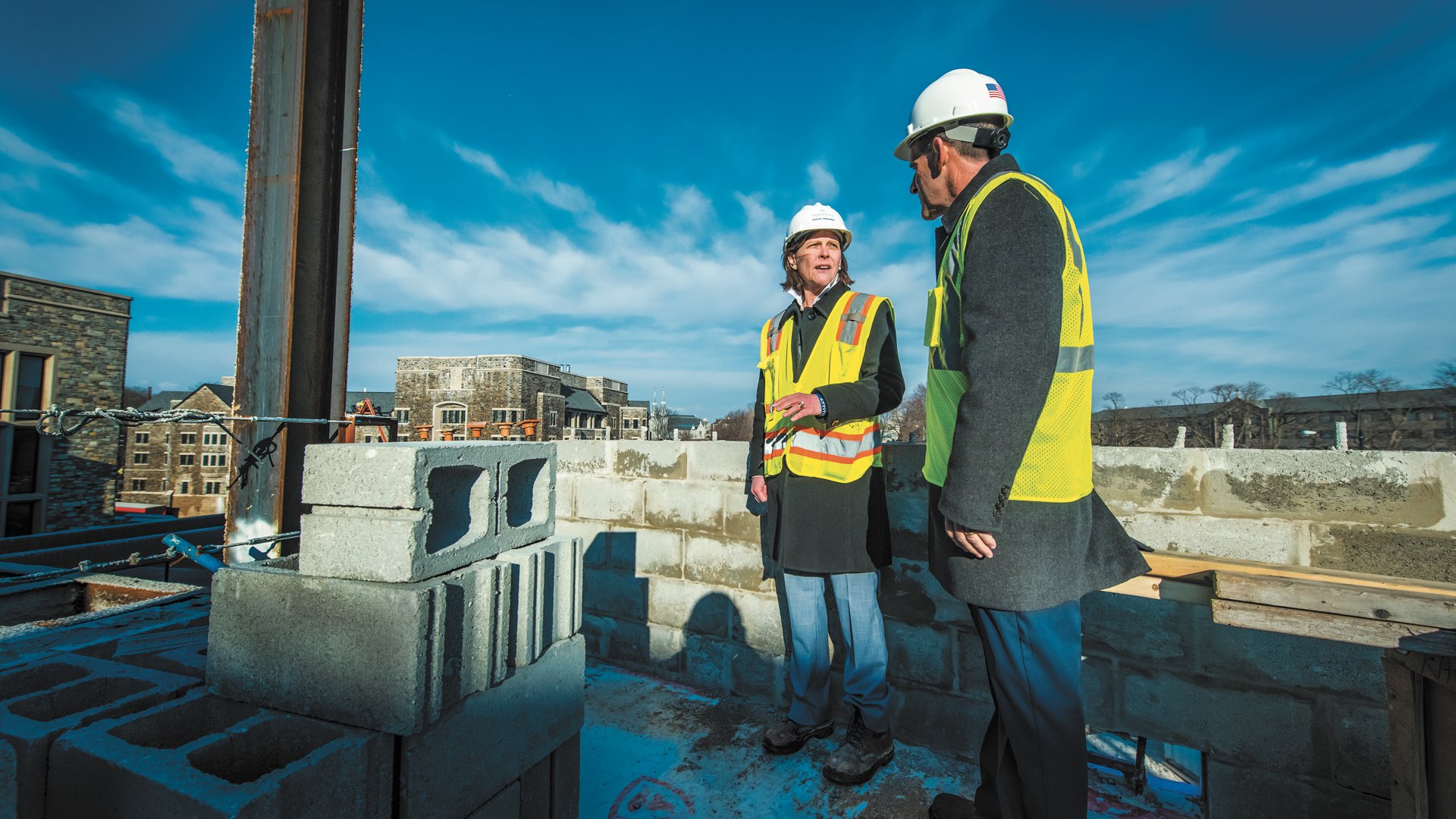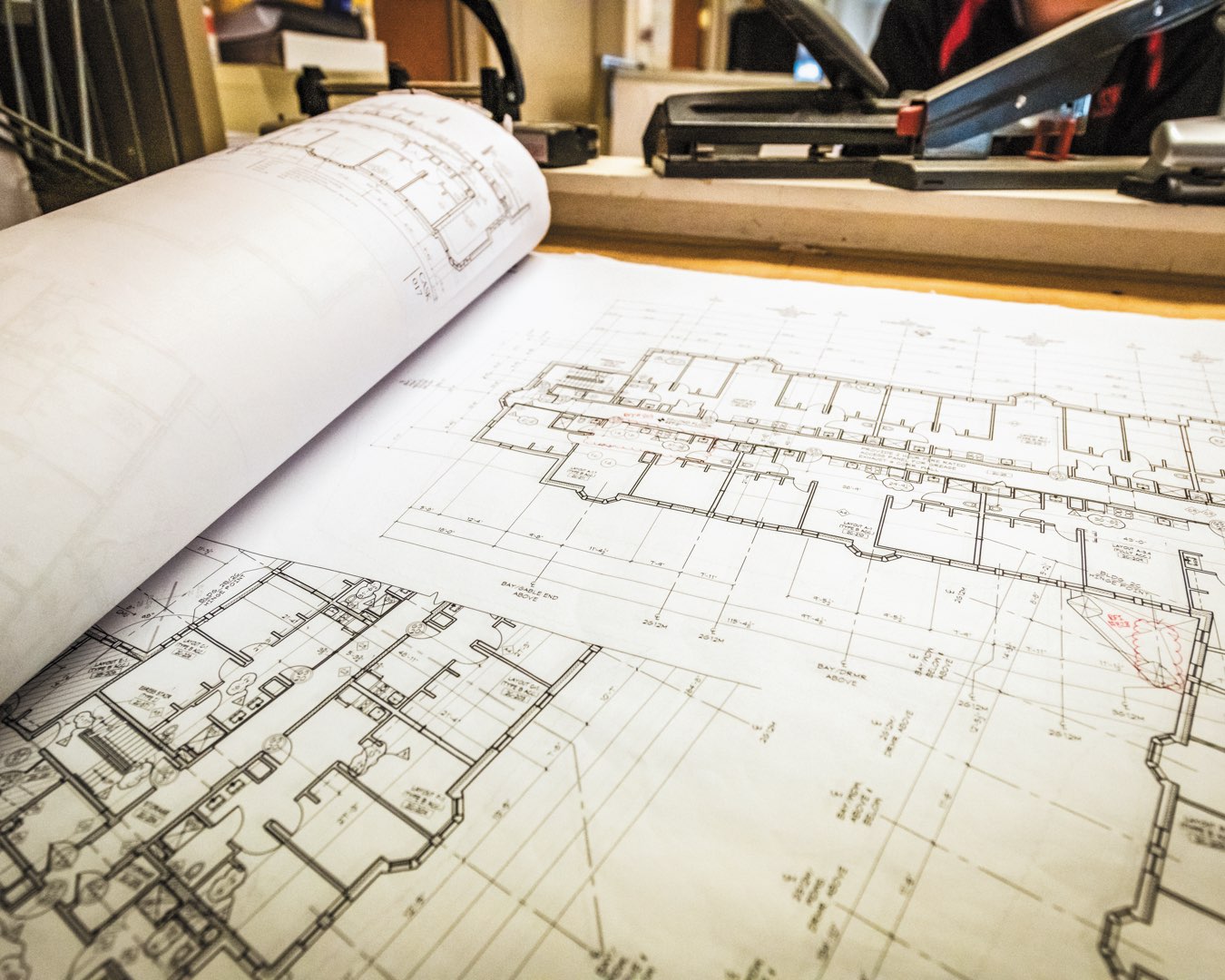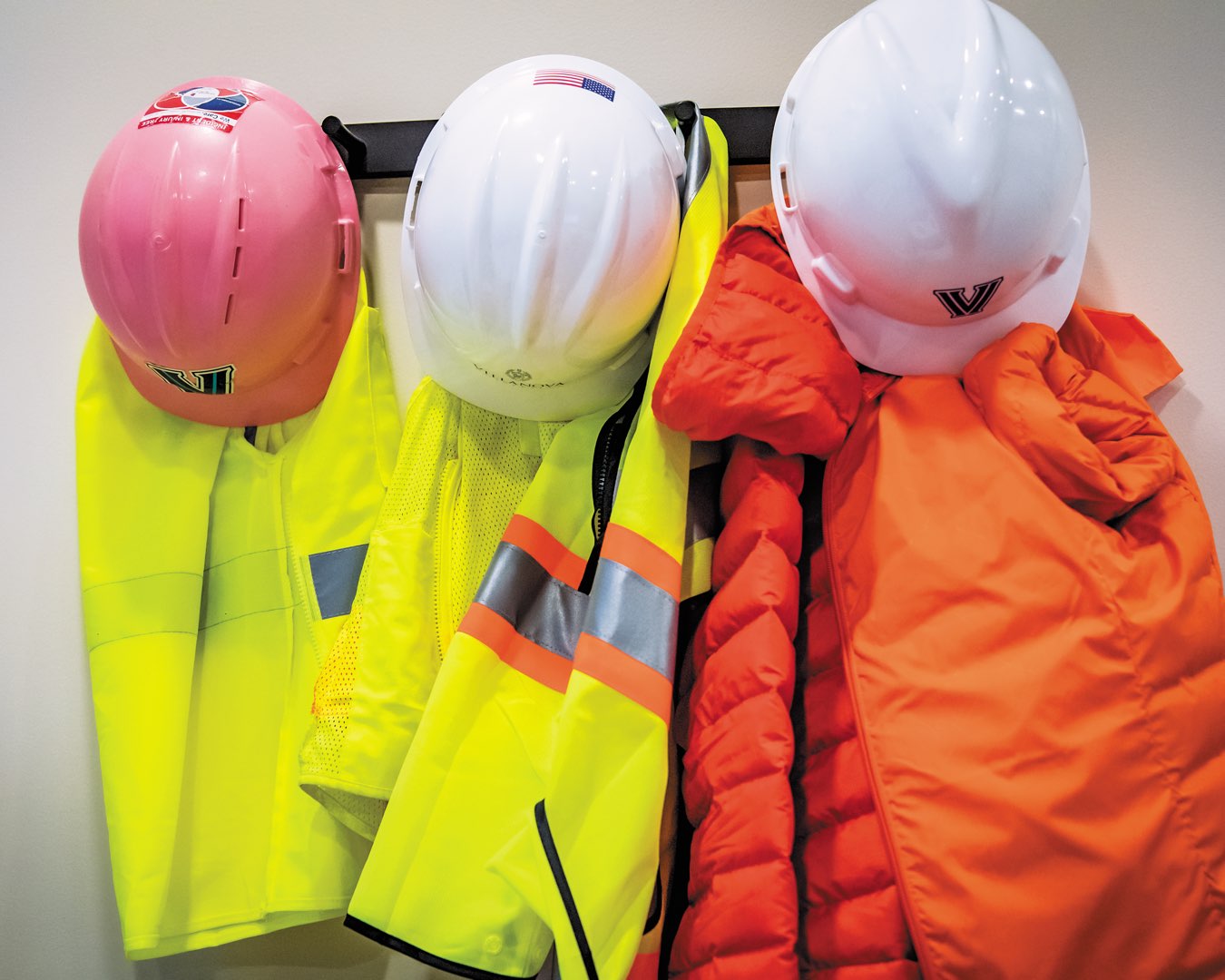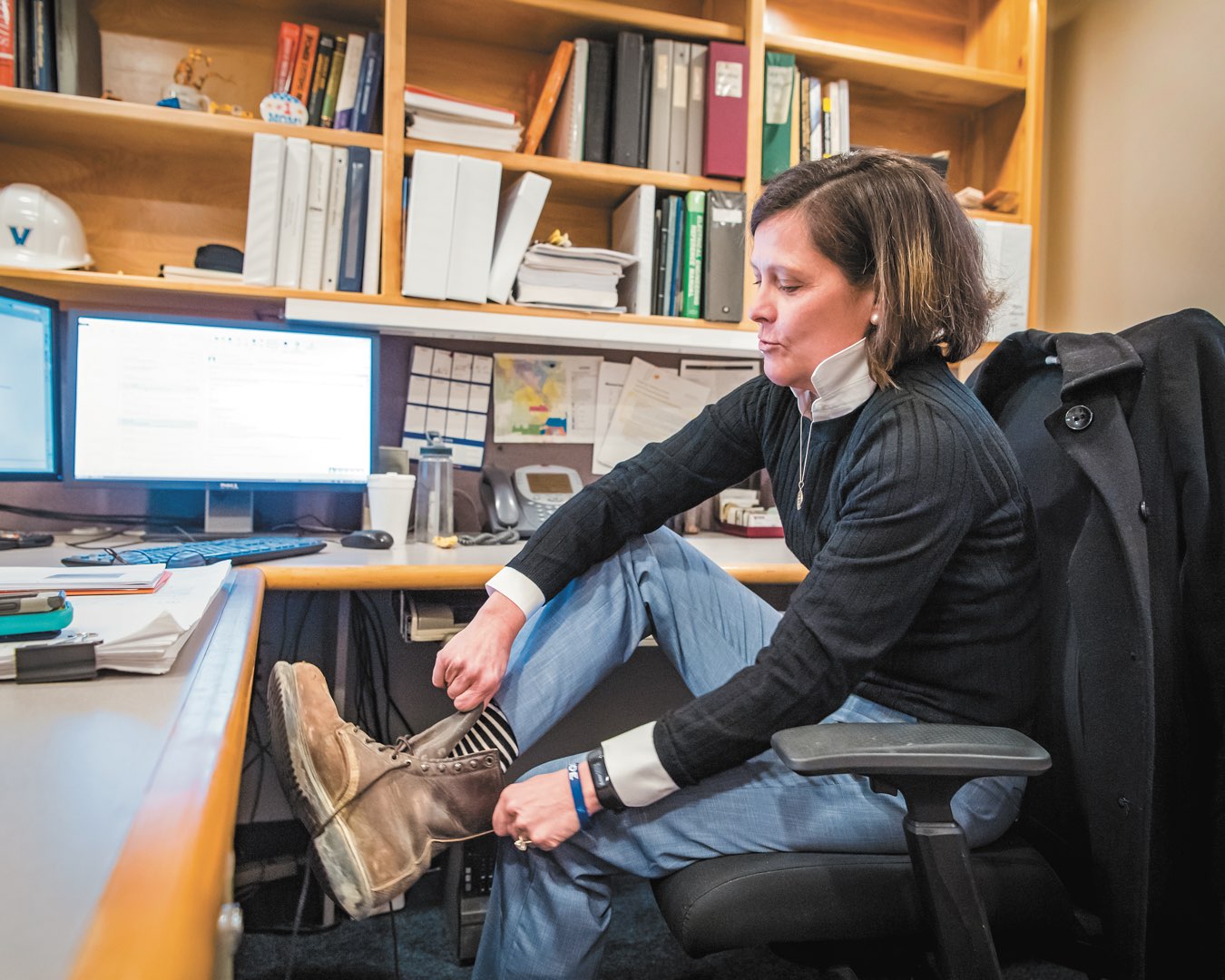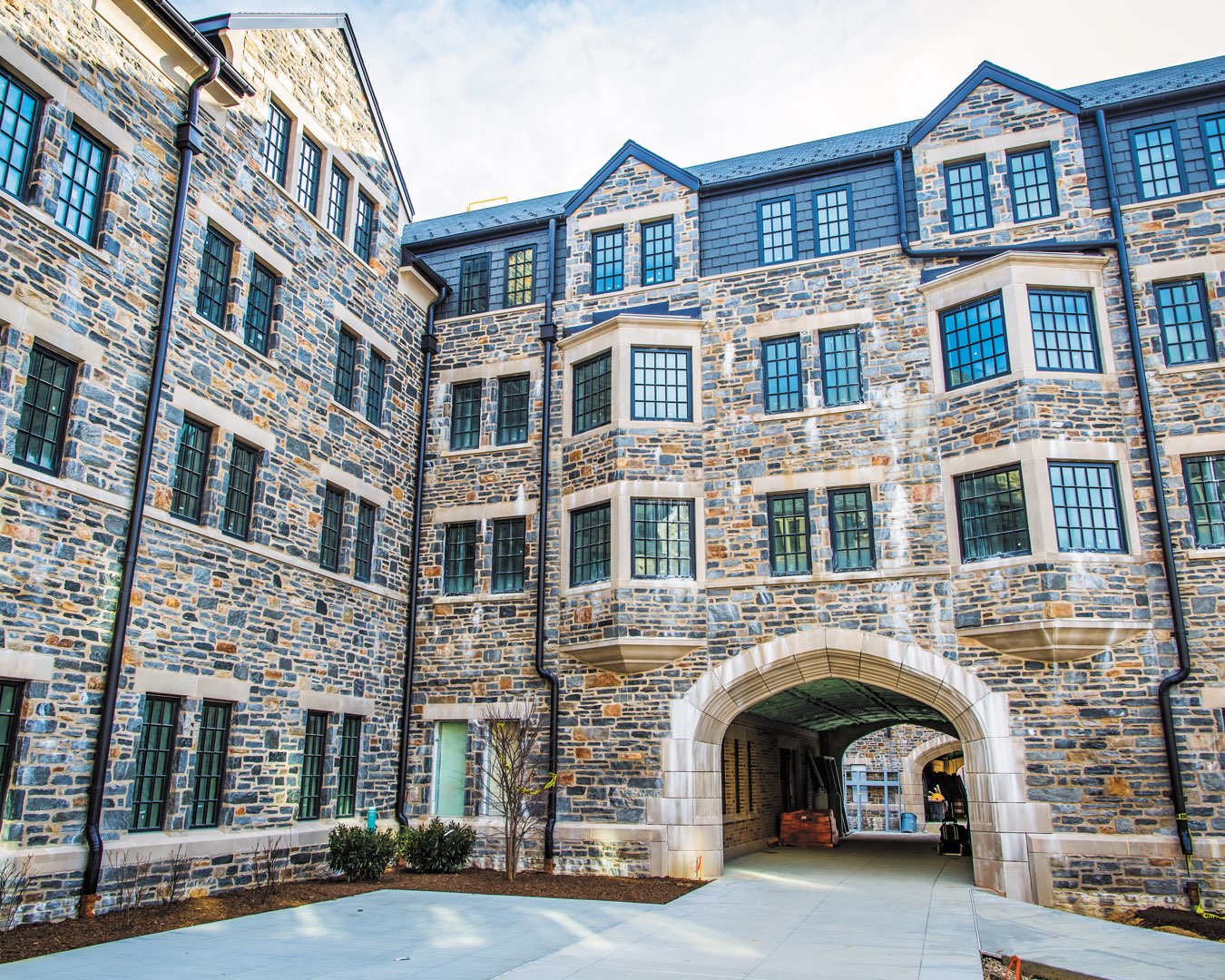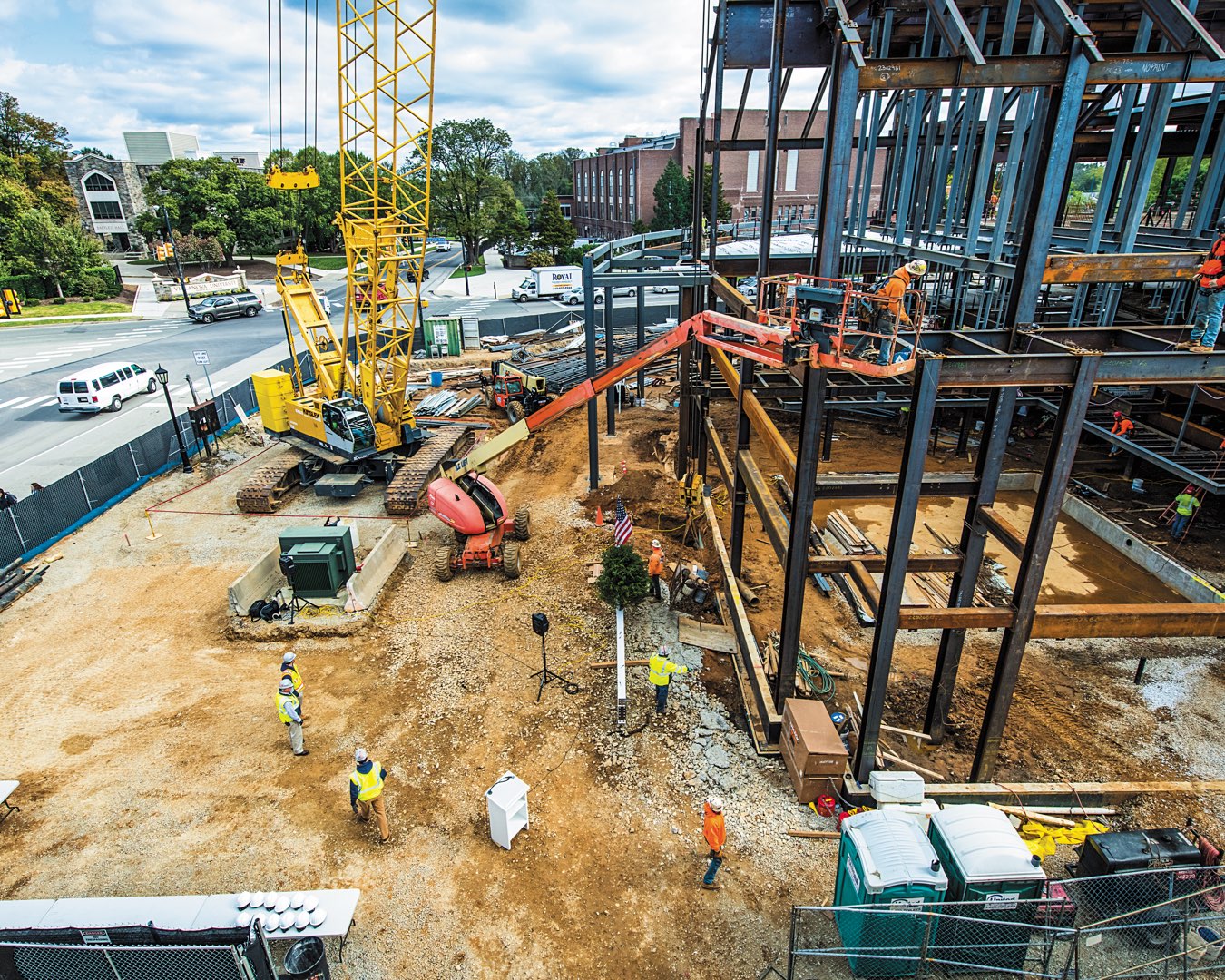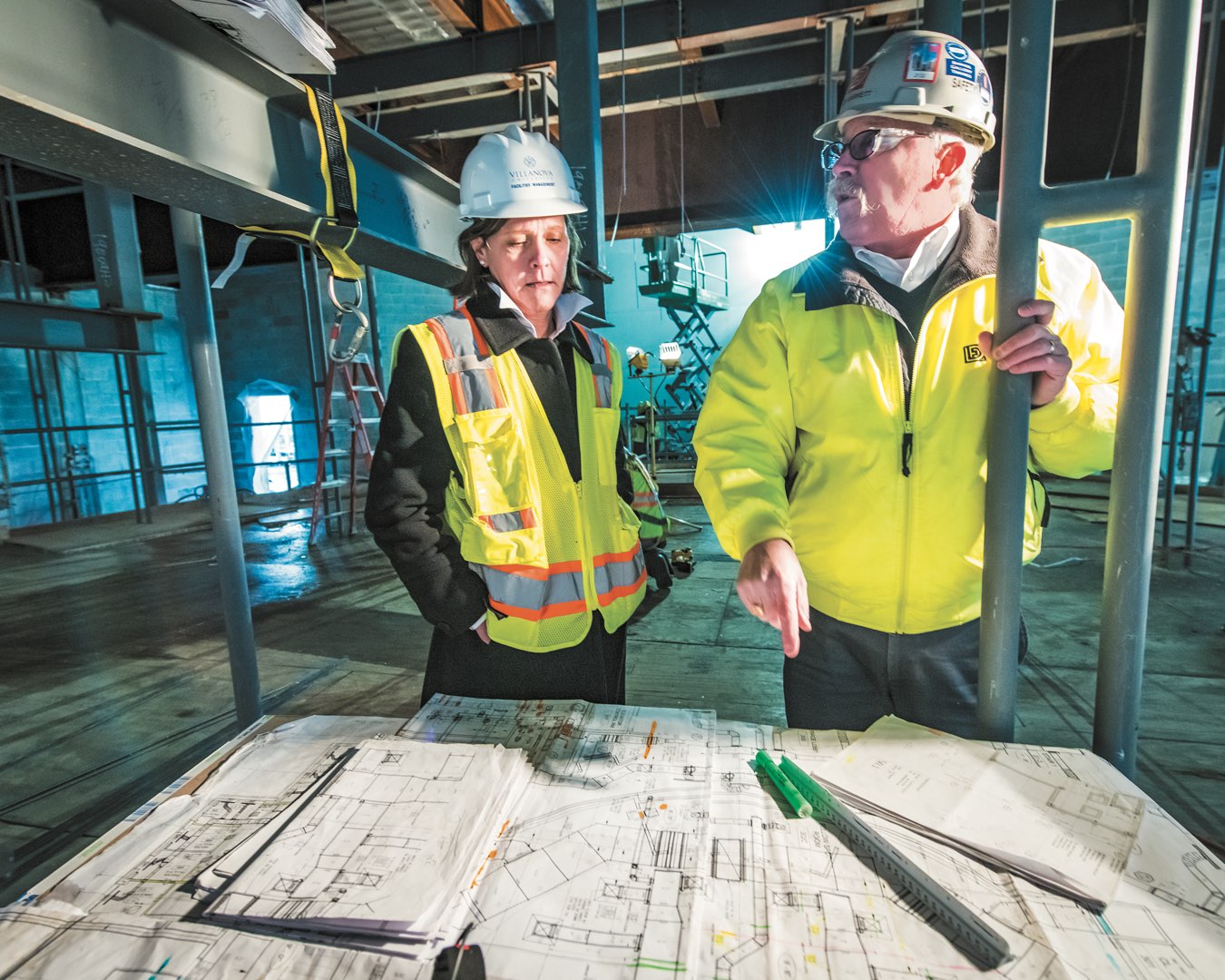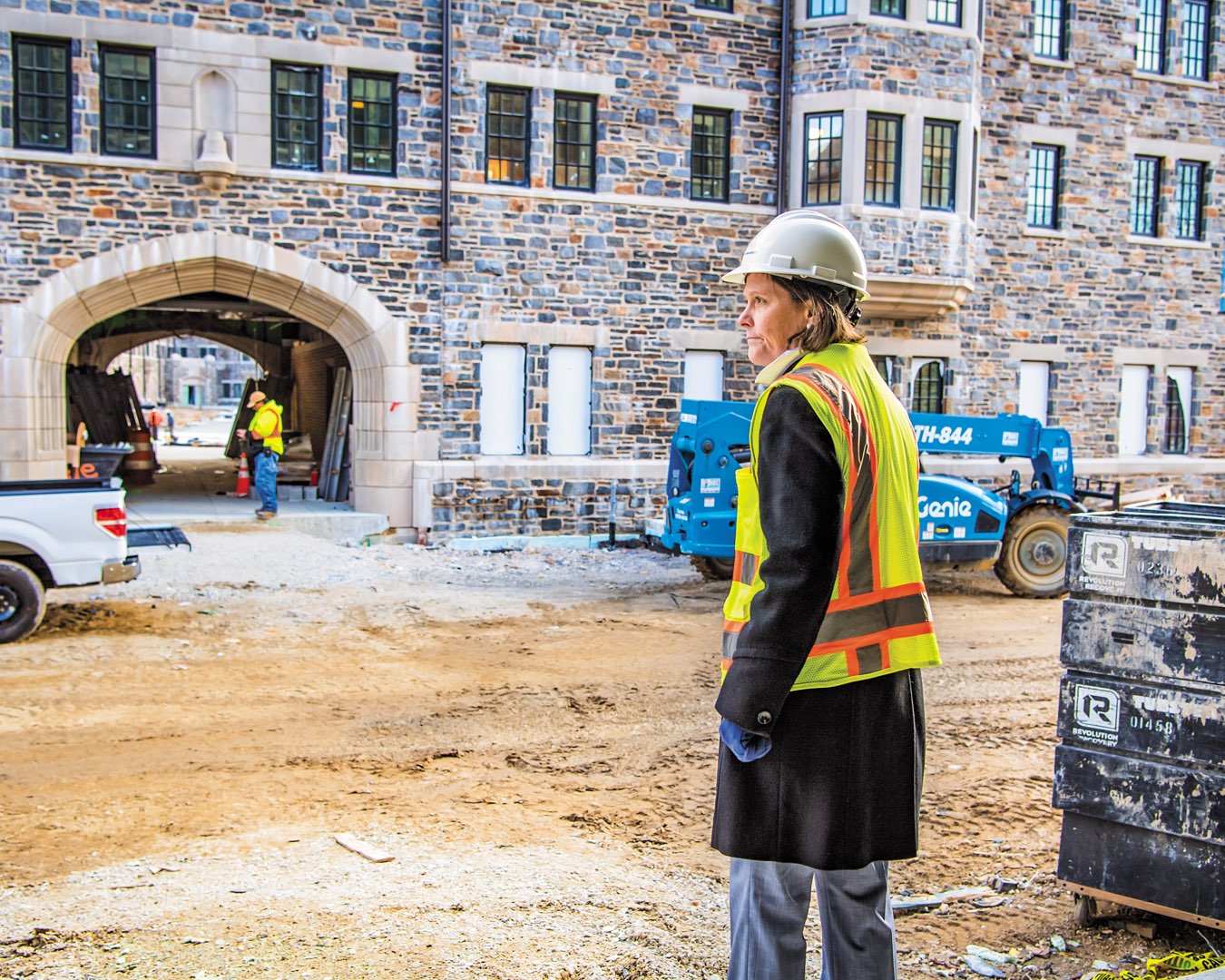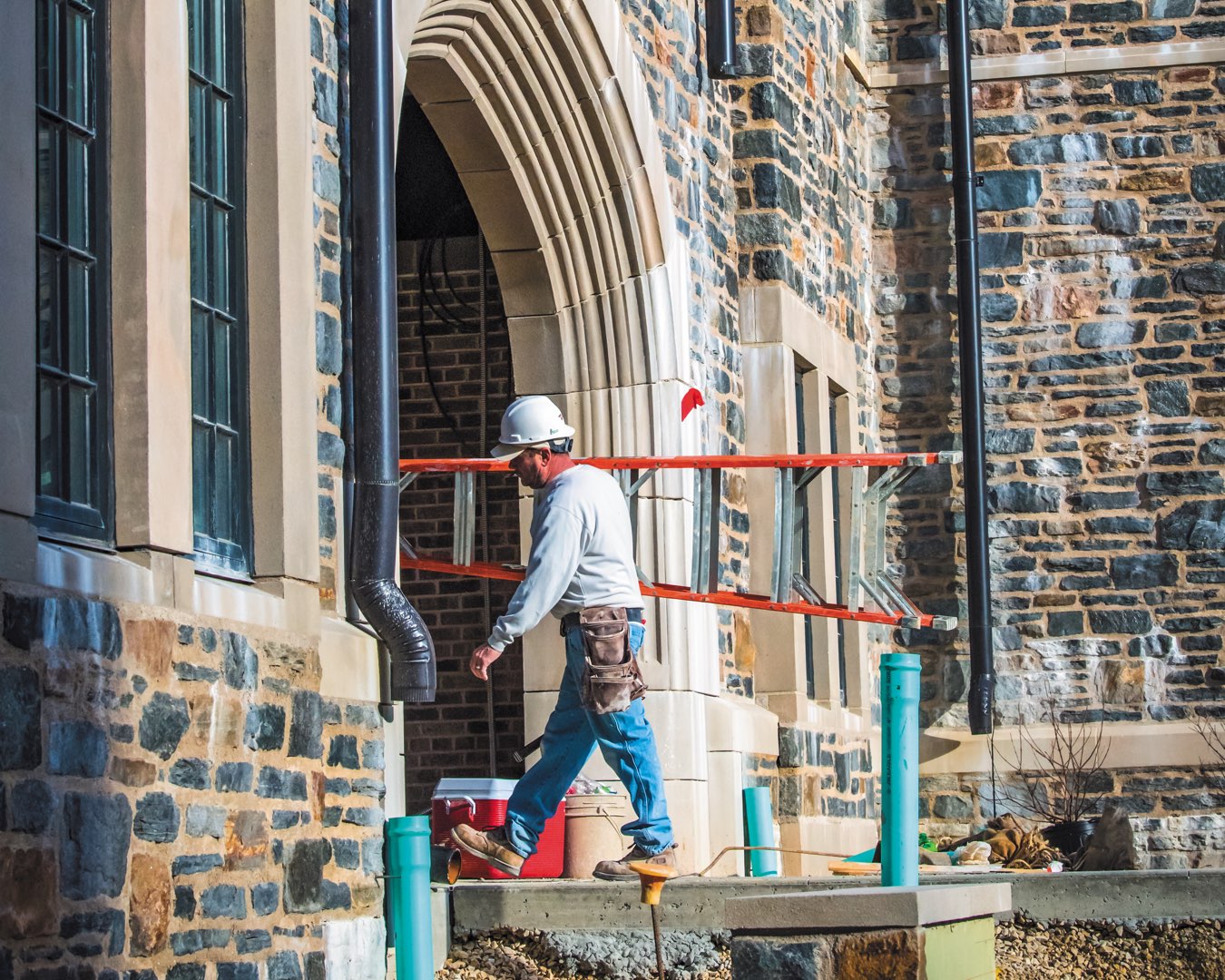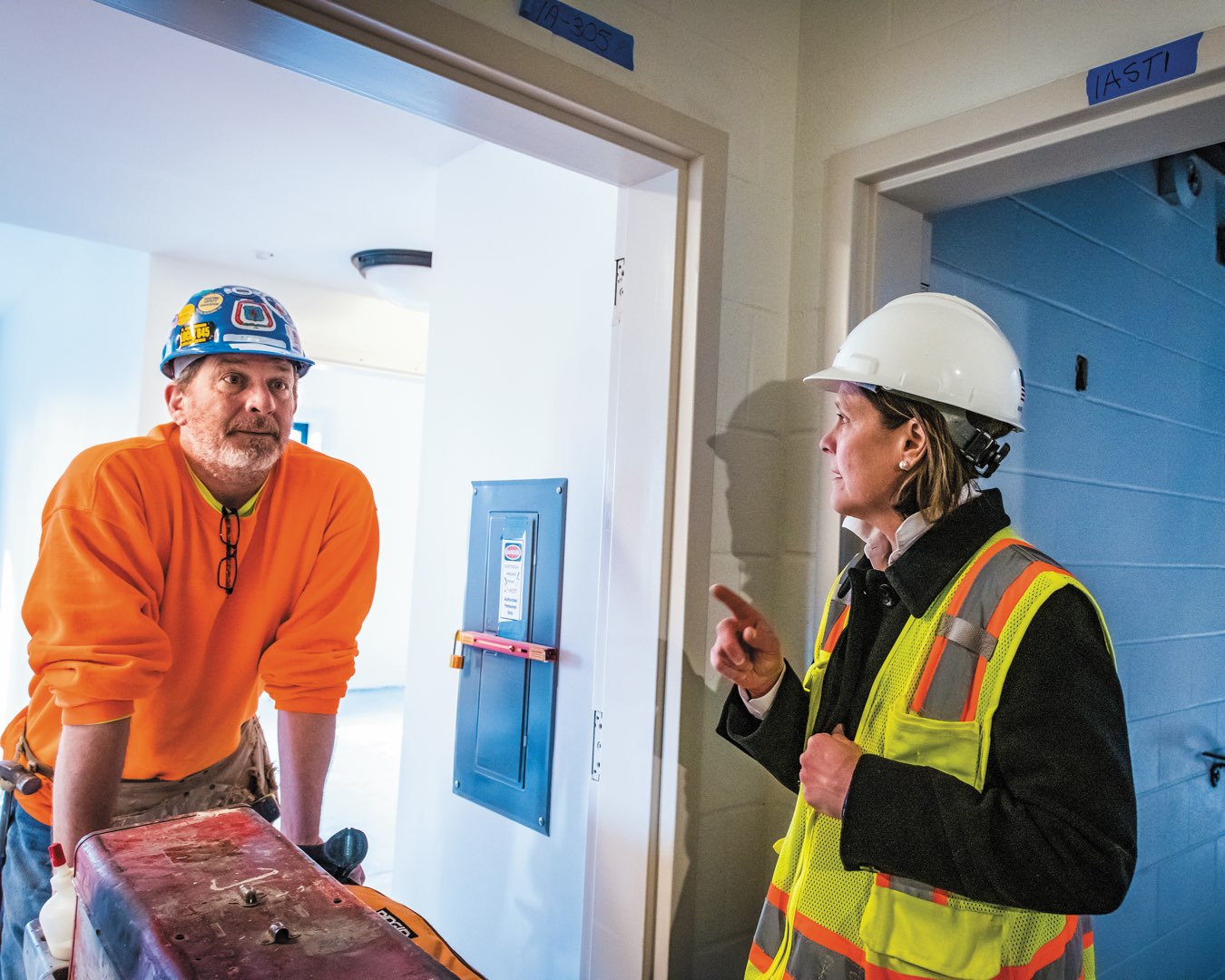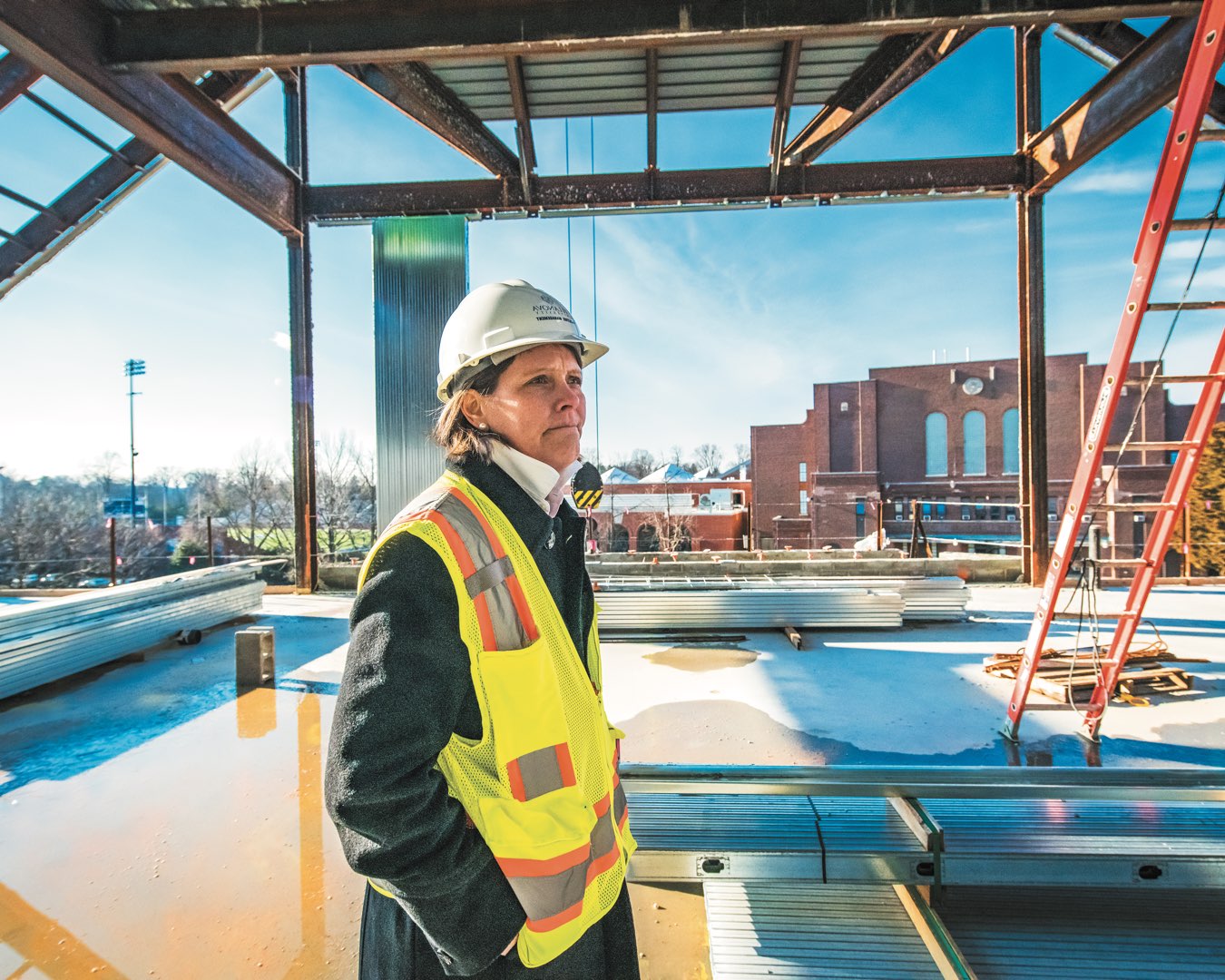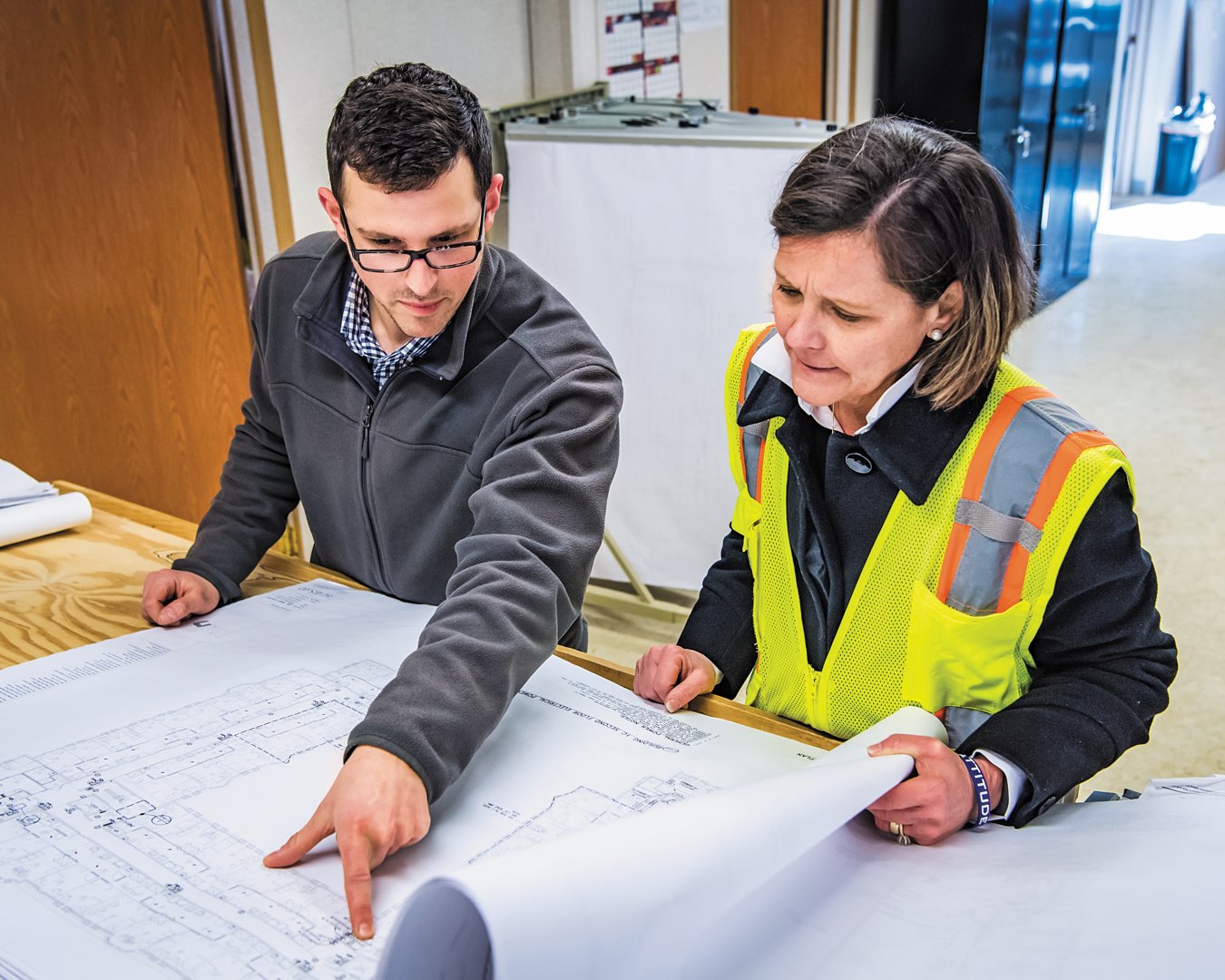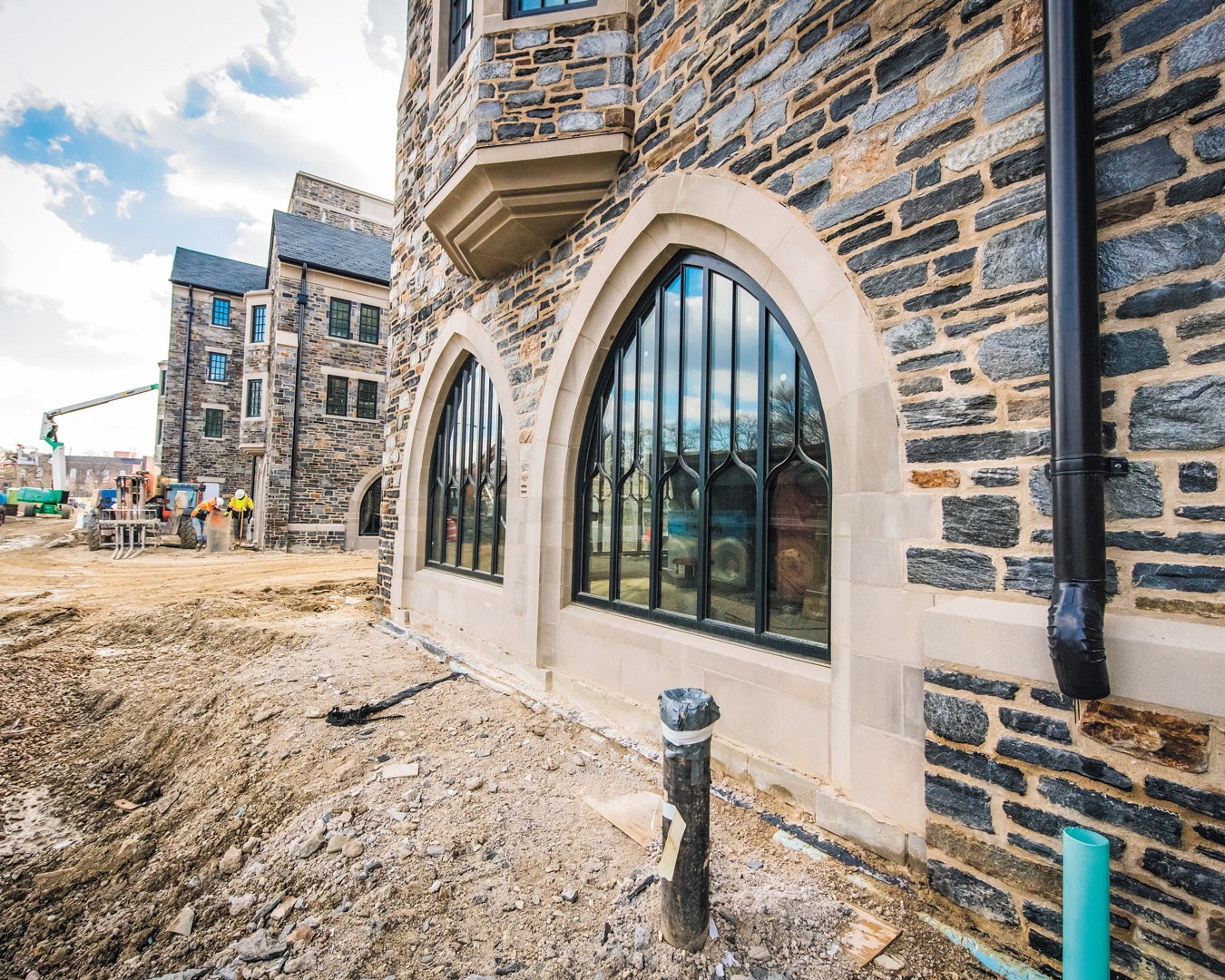At 5:45 a.m. on a brisk winter morning, Marilou Smith ’84 COE rounds the corner from Ithan Avenue to Lancaster Avenue in a well-worn pair of Brooks running sneakers. She makes a mental note of some items to discuss with contractors on the construction site later in the day.
A late bloomer to running, Smith took up the pastime as an outlet around the same time she took on the single biggest project of her 35-year career and of Villanova’s campus enhancements so far. The $285 million transformation of Lancaster Avenue entails construction of the Commons residence hall complex, Villanova’s first Performing Arts Center, a pedestrian bridge, a 1,200-vehicle parking garage, a two-story addition to the existing parking garage on campus, a surface parking lot and new streetscapes along Lancaster Avenue.
With the Ithan Avenue parking garage and pedestrian bridge spanning Route 30 complete, the August 2019 finish line for the Commons is in sight—with the 2020 opening of the Performing Arts Center not far behind it.
“The sites are part of my running loop, which gives me an opportunity to see what’s going on,” Smith says. “I can identify any potential issues and address them promptly so they don’t become a major problem.”
Anyone who’s worked with Smith during her 22 years in Facilities Management at Villanova wouldn’t be surprised that she gets a head start on her to-do list before the sun even comes up. She has a reputation as a problem-solver who’s always a step ahead. “Marilou is a great engineer and project manager and has a good perspective and balance in her approach to issues that crop up,” says Robert Morro, vice president for Facilities Management.
Since ground broke on the construction in 2015, Smith has worked with 60-plus outside consultants— from architects and engineers to traffic experts and parking lot specialists. “She has to mediate competing priorities and timelines with all of those people, and she’s very skilled at taking complicated issues and distilling them down to what’s really important to us,” Morro says.
